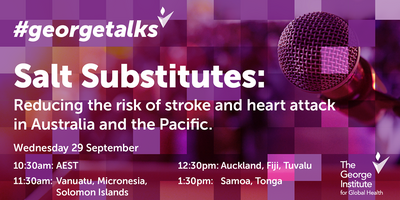
Cost effectiveness of salt reduction interventions in Pacific Islands
Non-communicable diseases are the leading cause of death in the world and this trend is evident in Pacific Island countries, where approximately 40% of Pacific Island citizens have been diagnosed with a NCD, mainly cardiovascular disease or diabetes, and/or have hypertension.
Surveys in a number of Pacific Island countries indicate high blood pressure is a significant NCD risk factor. One of the main causes of high blood pressure is excessive dietary salt intake however salt intake patterns and sources of salt have not been systematically evaluated in the Pacific Islands.
This study used a before and after cross-sectional survey design to assess changes in population salt intake, consumer attitudes and behaviour and frequency of consumption of different foods. A comprehensive process evaluation and cost-effectiveness analysis was also undertaken as part of the program.
Whilst salt intakes have not yet been reduced, the project has contributed to the development of longer term salt reduction initiatives. The process evaluation has increased our understanding of the contextual factors underlying intervention implementation. These included the impact of natural disasters (cyclones), political influence, and staff and governance changes on program delivery, as well as the need for more time to fully implement the program. In both countries, whilst consumer awareness has been raised, it is not clear if it has translated into behaviour change. Likewise standards for salt levels in foods (targets) have been integrated into policy but have not yet been fully enforced. Salt is now mainstreamed into government policies including through voluntary or regulatory salt standards and salt education as part of national NCD or nutrition strategies. Longer term monitoring of impacts of sustained programs is planned through future WHO STEPS surveys.
Lessons from the project are being integrated into tools and resources for other countries and disseminated through the World Health Organization Collaborating Centre on Population Salt Intake at the George Institute in line with its remit to support Member States towards achieving the global target of reducing average population salt intake by 30% by 2025.









